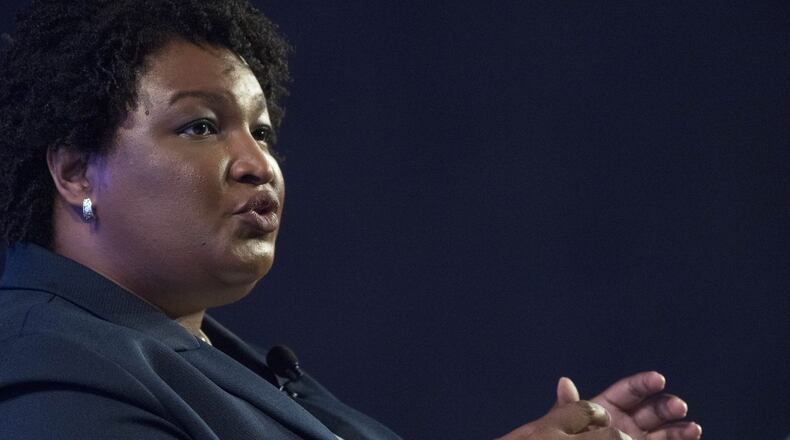Stacey Abrams held a telephone conference with Georgia teachers Monday to explain her education platform, a proposal so expansive that she calls it "cradle to career."
The only students the Democratic hopeful for governor would leave out are those in private schools: she wants to claw back the $100 million in tax credits for them and use the money to help finance her program instead, though she does support funding of private pre-K.
Some of what Abrams is proposing, such as less high-stakes testing, won't cost much, if anything. But her opponent, Republican Brian Kemp, is pitching the same thing on testing.
What sets Abrams apart, besides her animosity toward private school vouchers, is the scope of her public school program, with the emphasis on the word “public.” She says she is committed to smaller class sizes, more school counselors, protecting pensions, better teacher pay and expanded early childhood education. And that’s just part of her proposal; it also includes an overhaul of Georgia’s dated school funding formula.
Many state leaders, including Gov. Nathan Deal, have vowed to overhaul the formula, now in its fourth decade. But none has succeeded, with cost proving too formidable an obstacle.
Abrams dismissed her opponent’s more streamlined education plan as an election year "gimmick."
Kemp announced last week that he wants to give teachers a 5 percent pay raise at a cost of $600 million.
Abrams asserted that she is the only candidate with a plan to get teacher pay to the national average, with regular cost-of-living increases.
"One of the best ways to retain workers is to pay them their worth,” she said, adding, “it is insufficient for this to be a gimmick, an election year gimmick that may or may not come to fruition.”
When asked to put a price tag on her own plan, though, Abrams was not specific beyond a nearly $300 million estimate to expand early childhood education. She said she'd find whatever money is needed through a variety of means, such as better tax collections, an expected windfall from federal tax cuts, the tapping of federal funds (Medicaid expansion) and the elimination of tax credits like the ones that now pay for private school tuitions.
"When you add those things together, we have a sufficient amount of revenue,” she said.
About the Author
Keep Reading
The Latest
Featured


